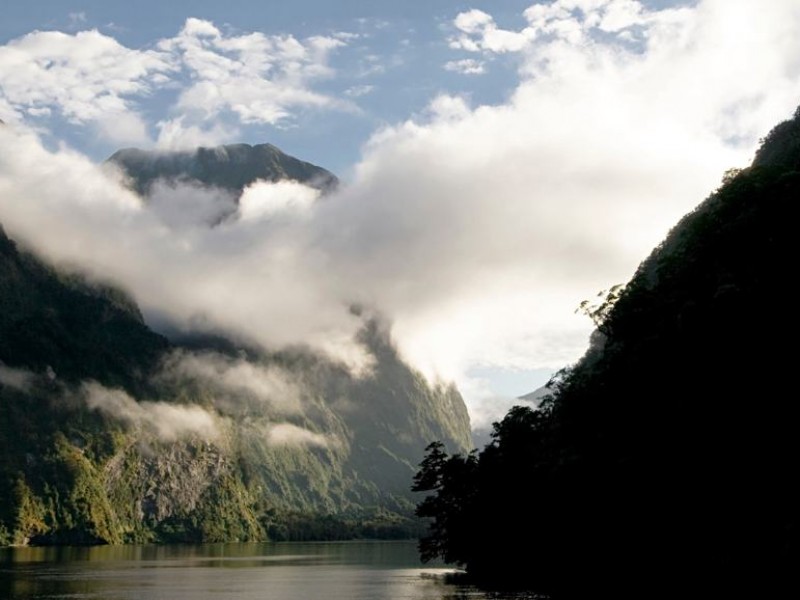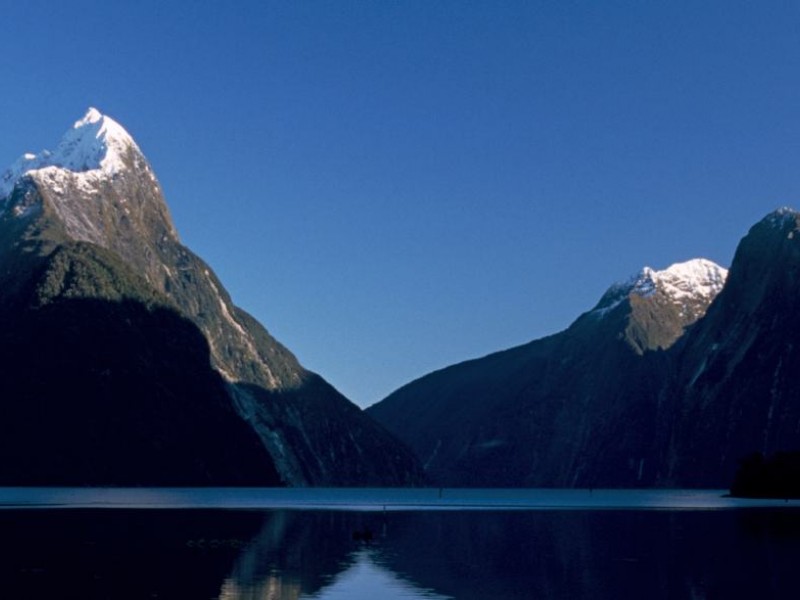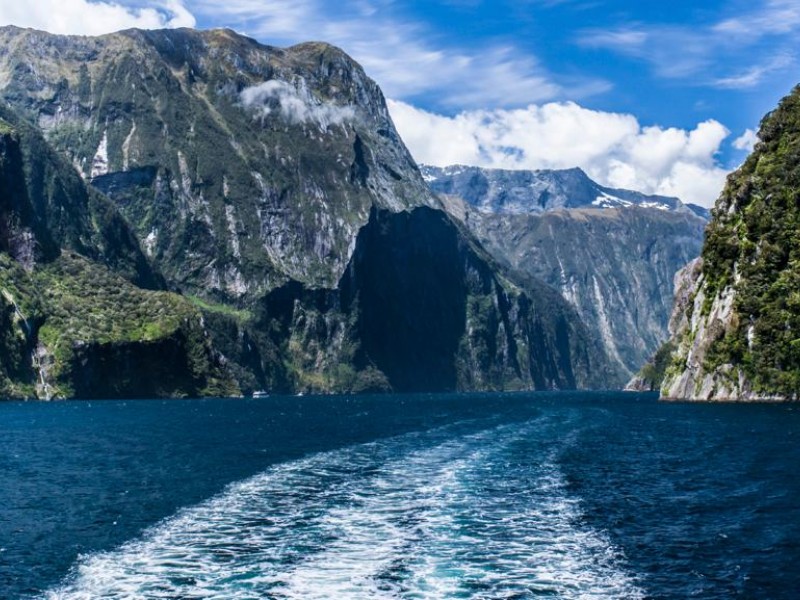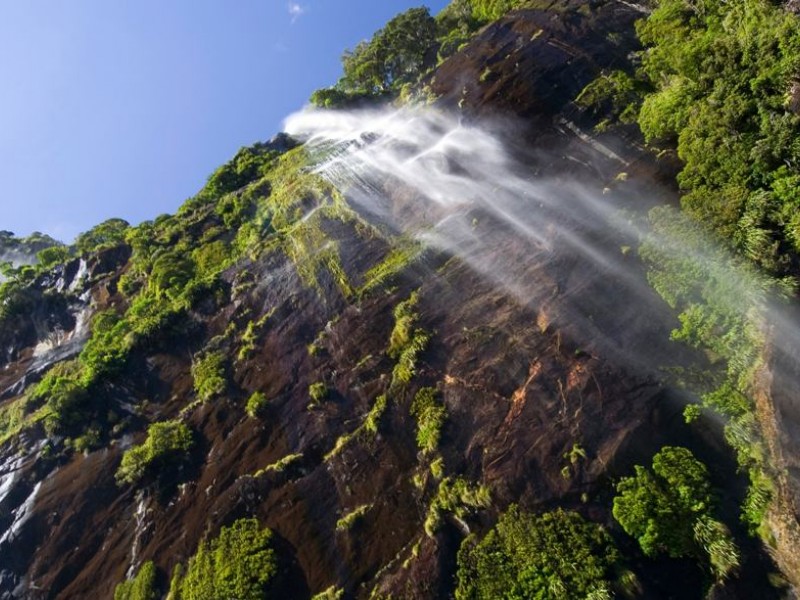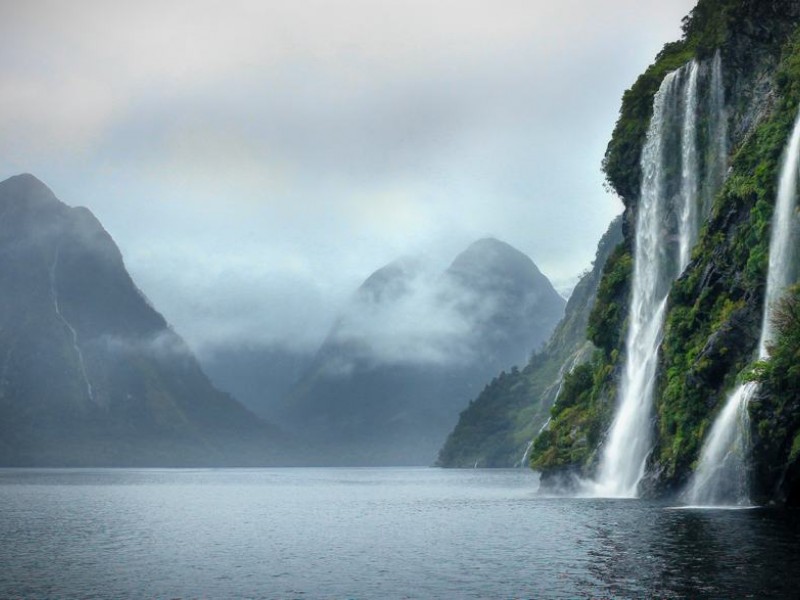- 15:56
- +64 3 441 3322
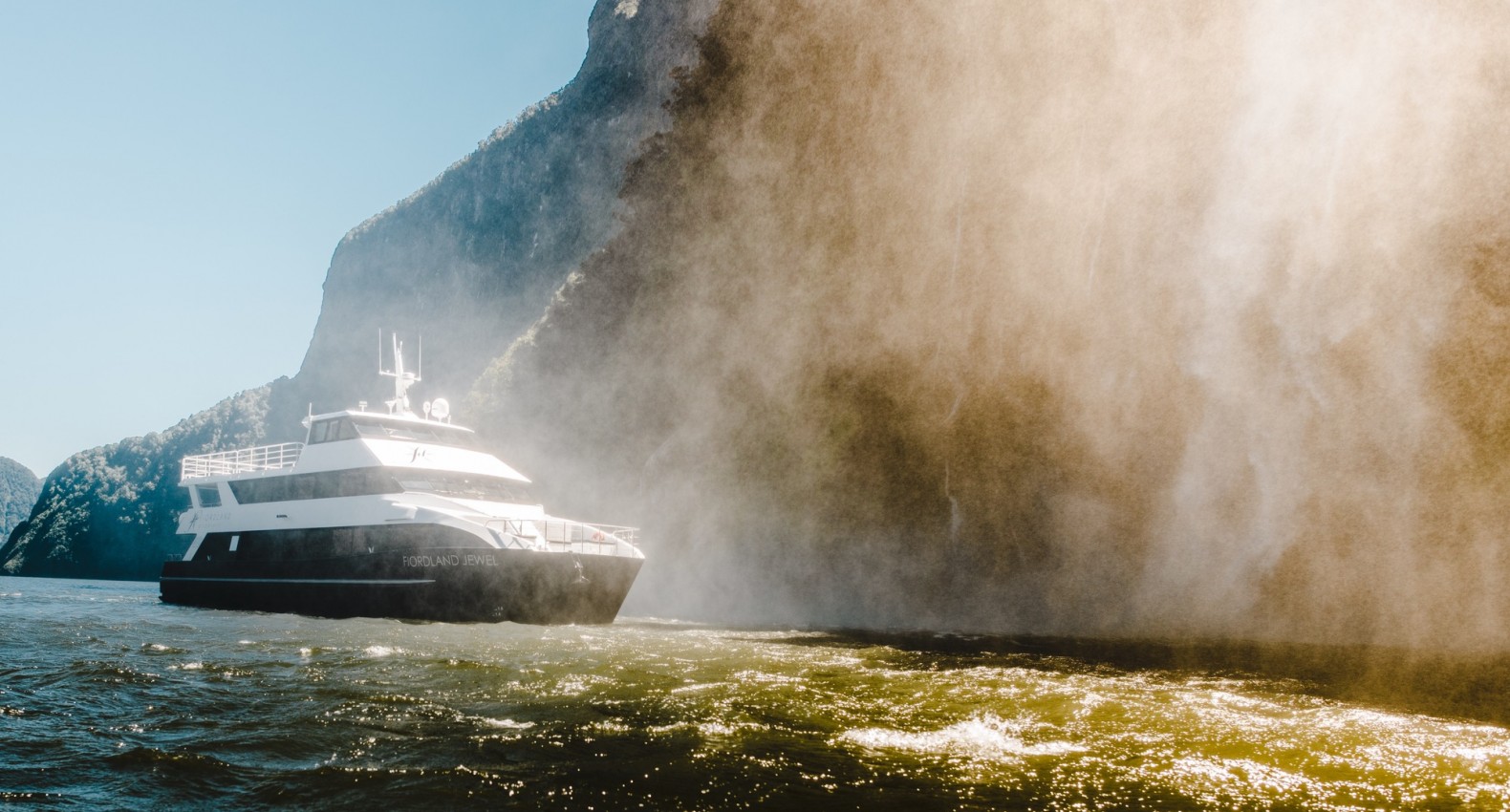
Stunning Scenery
The massive glaciers that tore the landscape apart 15,000 years ago left 14 fascinating fiords, the northernmost being the famous Milford Sound, with its narrow valley and steep cliffs, and the southernmost being Dusky Sound, and Chalky and Preservation Inlets.
Strictly speaking, a “sound” is formed by a river, while a “fiord” is a glacier-formed valley. Fiordland’s southern fiords are much larger than its northern fiords, with mountains and hills complementing their islands and coves. The remote islands in particular have been a real opportunity to establish bird sanctuaries, such as Anchor Island, which is now home to the likes of the kakapo and saddleback.
Fiordland receives about 6500mm of rainfall each year, the perfect catalyst for beautiful waterfalls and lush podocarp forest, both abundant in Dusky Sound. This rainfall also creates a freshwater layer on top of the fiords, resulting in a unique marine environment.
Mitre Peak and Bowen Falls
Before your cruise even begins, you’ll be treated to the spectacular sight of one of New Zealand’s most iconic mountains – Mitre Peak – which rises dramatically from the water to 1678 metres. Then, onboard Fiordland Jewel, you’ll cruise directly beneath the enormous sheer granite rock cliffs and have the most incredible view across the sound of the Bowen Falls, which plunge 160 metres from a hanging valley into the fiord below.
Sinbad Gully
To the left of Mitre Peak is Sinbad Gully, a hanging valley with colossal northern cliffs that rise 1400 metres. Created 15,000 years ago by the smaller Sinbad glacier running into the larger Milford glacier, it is the first of a series of hanging valleys that have shaped extraordinary waterfalls. The Gully was the last mainland refuge for the endangered kakapo parrot, which has since been moved to a remote island.
Cascade Range and Harrison’s Cove
Across from Sinbad Gully lies the Cascade Range, which features many waterfalls that tumble deep into Milford Sound. Below Cascade Peak is Harrison’s Cove – a safe, natural harbour which faces away from the entrance of the fiord.
The Lion, Mt Pembroke and the Elephant
Past Harrison’s Cove is The Lion, a 1302-metre mountain shaped like a crouching lion. Behind the Lion, you can glimpse Mt Pembroke (2015 metres), the highest peak in the sounds and home of the Pembroke Glacier, which is more than a million years old. Beyond the Lion is the Elephant, with its “trunk” sweeping down into the neighbouring valley.
Stirling Falls, Fairy Falls and Bridal Veil Falls
Cascading 146 metres and fed by the Pembroke Glacier, the Stirling Falls are the second largest of all the permanent waterfalls in Milford Sound. On the other side of this narrow stretch of water are Fairy Falls and Bridal Veil Falls, which flow down the steep ravines of a fault line and are a spectacular sight in wet weather. If weather permits, your skipper may take you under the Fairy Falls as they drop directly into the water.
Dale Point, Anita Bay, Fox Point and Saint Anne Point
Two kilometres down the fiord is Dale Point, where we turn right into the mouth of the fiord. Here we start to experience hints of the Roaring Forties and great ocean swells which, because of the dog-leg, are not present in the fiord itself. We then cruise around the mouth past Anita Bay, Fox Point and the lighthouse at Saint Anne Point before turning back into the Sound.
Milford Sound is a haven for marine and bird life. From the comfort of our vessel you have the chance to witness bottlenose dolphins, fur seals and a variety of birds in their natural habitat. We are unable to guarantee sightings of wildlife, but dolphins and particularly seals are often spotted in the fiord.

